Growing spinach in your home garden is a rewarding experience, offering fresh, leafy greens for your culinary needs.
As a versatile and easy-to-grow vegetable, spinach is a favorite among gardeners, from beginners to experts. The fast-growing nature of spinach makes it a great choice for those who enjoy quick results from their gardening efforts.
In this article, we’ll explore the benefits of growing spinach, discuss some popular varieties, and provide essential care tips to help you cultivate this nutritious and tasty green.
Benefits of Growing Spinach
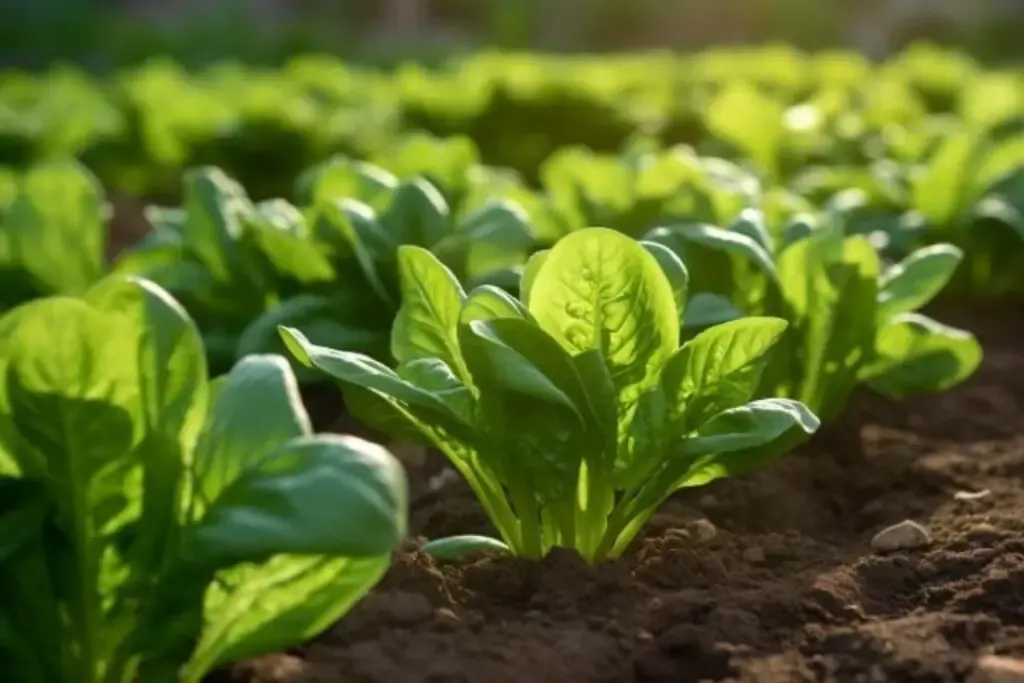
1. Nutritional Powerhouse
Spinach is a superfood, loaded with vitamins (A, C, K), minerals (iron, calcium), and antioxidants. Growing it at home ensures you have the freshest, most nutrient-rich spinach possible.
2. Ease Growing
Spinach is an ideal vegetable for beginners. It grows quickly and can be harvested as early as 4-6 weeks after planting. It’s also suitable for growing in containers and small spaces.
3. Extended Growing Season
Spinach can be grown in both spring and fall and in some climates, even through winter. This versatility allows for multiple harvests throughout the year.
My Favorite Spinach Varieties
Spinach comes in several varieties, each with unique traits that suit different growing conditions and culinary uses.
Here are three varieties that I find particularly enjoyable:
1. Bloomsdale Long Standing
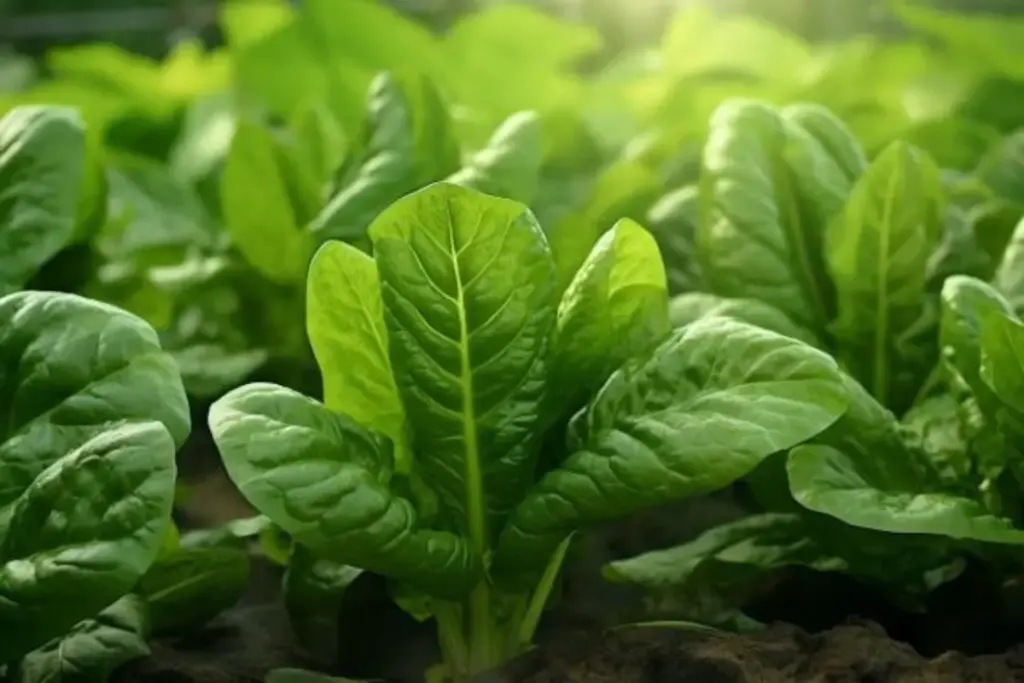
This is one of the most popular heirloom varieties of spinach. It’s known for its excellent flavor and resistance to bolting (going to seed) in warm weather.
The crinkly, dark green leaves are not only tasty but also attractive in the garden.
2. Giant Noble
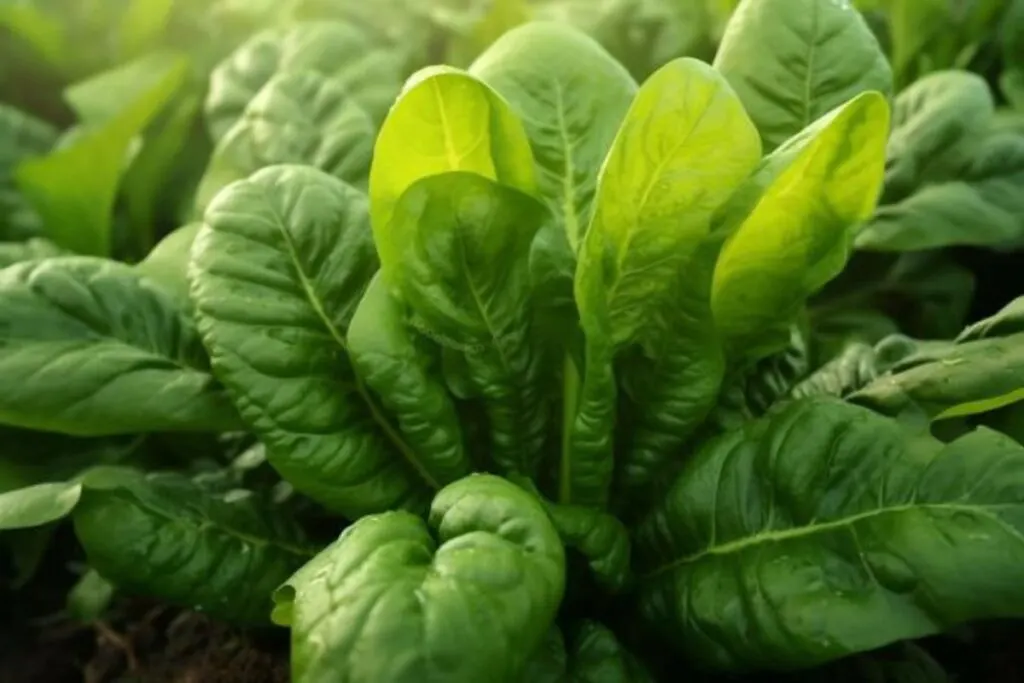
If you’re looking for large, smooth leaves, Giant Noble is an excellent choice. It’s perfect for salads and cooking, due to its tender texture and good flavor. This variety is also easy to grow and harvest.
3. New Zealand Spinach
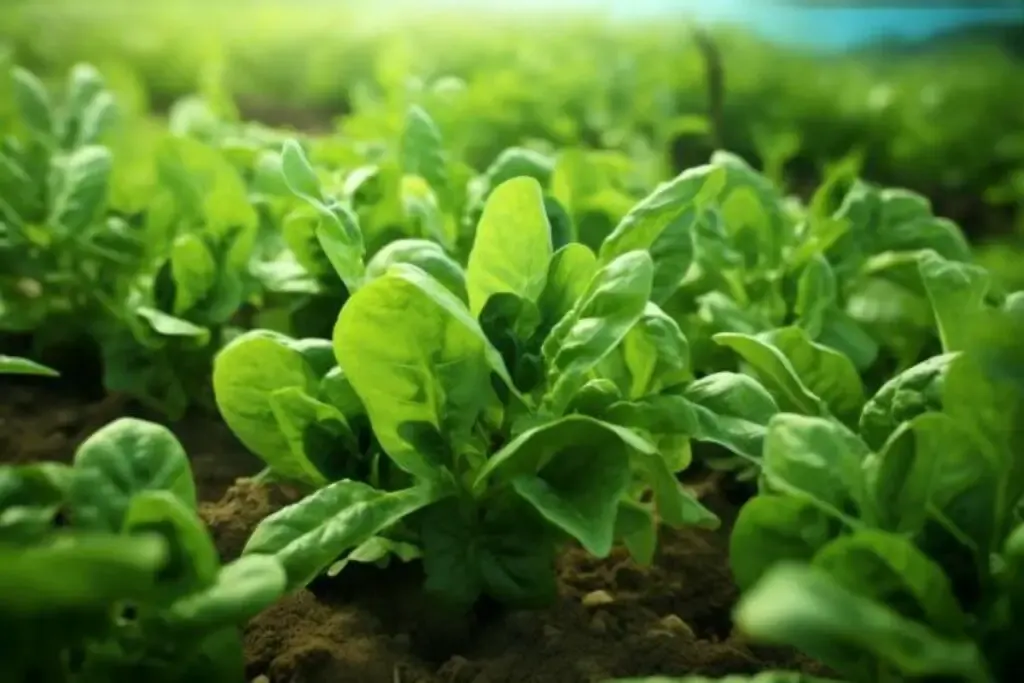
While not a true spinach, New Zealand Spinach is a great alternative for summer growing, as it’s more heat-tolerant than traditional spinach.
It has a slightly different flavor and texture but can be used in the same way as regular spinach.
Spinach Care
Caring for spinach is straightforward, making it a great choice for both beginner and experienced gardeners. This leafy green thrives under the right conditions and can provide a quick and bountiful harvest.
Let’s walk through the key aspects of spinach care, covering planting, light requirements, soil preferences, water needs, temperature and humidity, and fertilization.
Planting
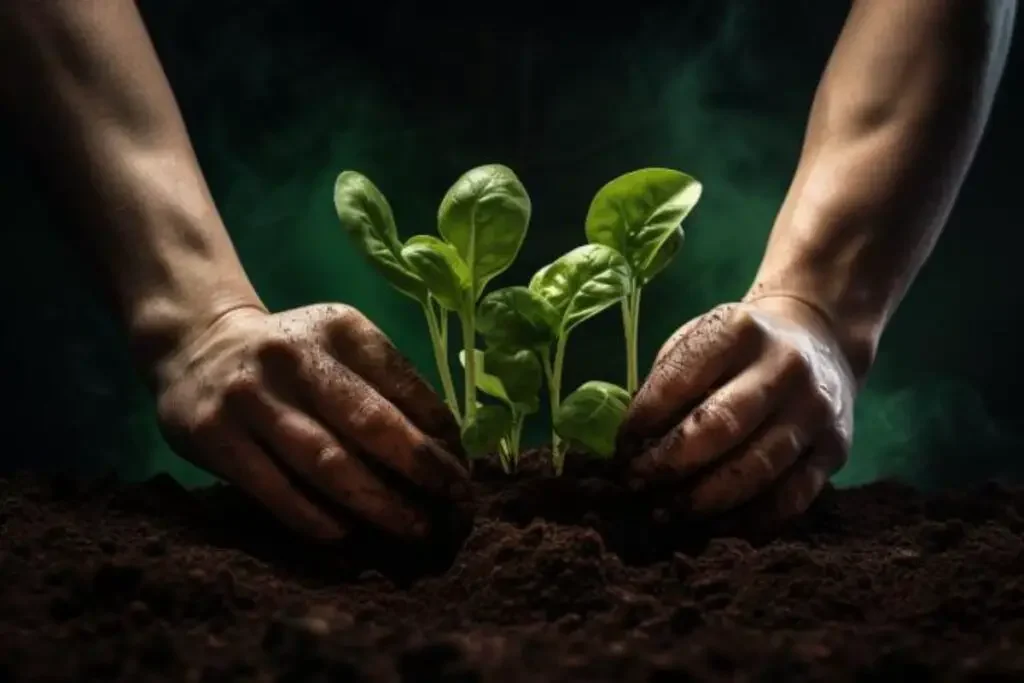
Spinach seeds should be sown directly in the garden as soon as the soil can be worked in the spring. For a fall crop, plant them in late summer.
Space the seeds about 1/2 inch deep and 2-3 inches apart in rows. Once the seedlings are a few inches tall, thin them to 4-6 inches apart.
Spinach can also be grown successfully in containers, making it a versatile choice for different gardening setups.
Light
Spinach grows best in full sun but can tolerate partial shade, especially in warmer climates.
In areas with hot summers, providing some afternoon shade can help prevent the plant from bolting (going to seed prematurely).
Soil
This vegetable prefers well-draining, fertile soil with a pH between 6.5 and 7.5. Enriching the soil with organic matter such as compost or well-rotted manure can improve soil health and provide nutrients for the spinach.
Water
Spinach requires consistent moisture to grow quickly and produce tender leaves. Water the plants regularly, keeping the soil evenly moist but not waterlogged.
Mulching around the plants can help retain soil moisture and suppress weeds.
Temperature and Humidity
Spinach is a cool-season crop and grows best in temperatures between 35°F and 75°F.
It can tolerate a light frost, making it an excellent crop for early spring and fall. High temperatures and long days can cause spinach to bolt, so it’s best to grow it in cooler weather.
Fertilizer
A light application of a balanced fertilizer can be used at planting time. Spinach doesn’t require heavy feeding, but a midseason side dressing of compost or a balanced fertilizer can encourage robust growth, especially if the leaves appear pale or growth seems slow.
Harvesting Spinach
Harvesting spinach at the right time is key to enjoying its best flavor and texture. You can start harvesting when the leaves are large enough to eat, typically when they are about 3-4 inches long.
For baby spinach, you can harvest it even earlier. Cut the outer leaves first, allowing the inner leaves to continue growing, or harvest the entire plant by cutting it off at the base.
Regular harvesting encourages new growth, allowing you to get multiple harvests from the same plant.
Pruning
Pruning isn’t a common practice with spinach as it is a fast-growing, leafy vegetable.
The focus is more on regular harvesting, which essentially serves the same purpose as pruning by encouraging new growth.
However, if you notice any yellow or damaged leaves, removing them can help maintain the health of the plant.
Propagating
Spinach is typically propagated from seeds and doesn’t propagate well from cuttings. To continue your spinach crop, simply plant new seeds every few weeks.
This practice, known as succession planting, ensures a continuous supply of fresh spinach throughout the growing season.
How to Grow Spinach From Seed
Growing spinach from seed is straightforward. Sow the seeds directly into the garden or a container as soon as the soil can be worked in spring.
Plant the seeds about 1/2 inch deep and cover them lightly with soil. Keep the soil moist until the seeds germinate, which usually takes about 1-2 weeks.
Thin the seedlings to about 4-6 inches apart once they are a few inches tall.
Growing in Pots
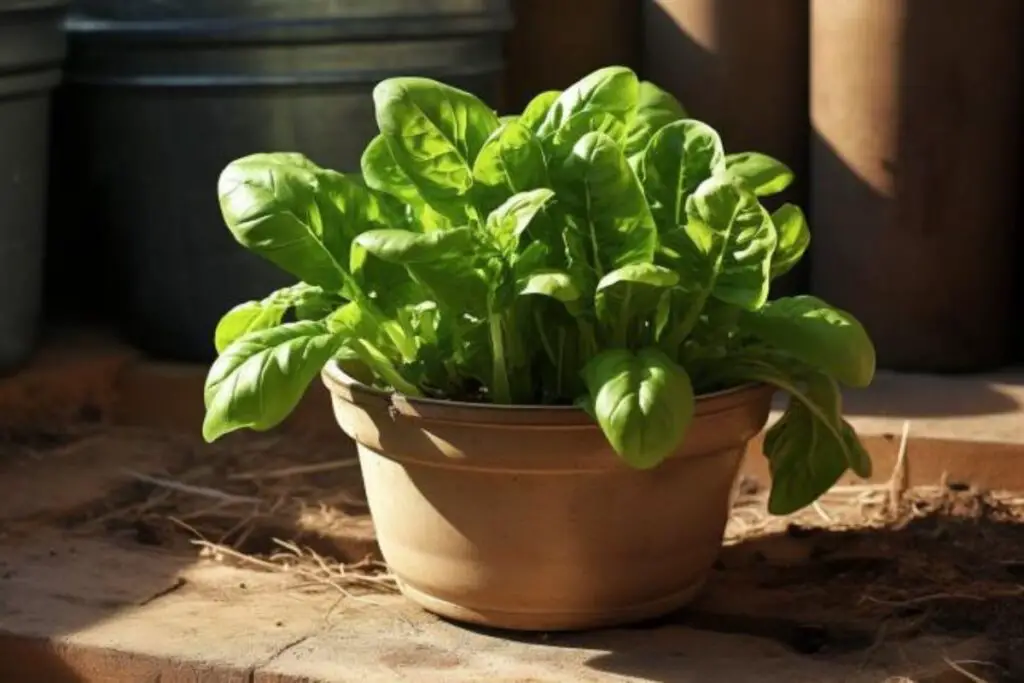
Spinach is well-suited for container gardening. Choose a pot that is at least 6-8 inches deep and has good drainage. Fill the pot with a high-quality potting mix and sow the seeds directly into the soil.
Keep the soil moist and place the pot in a spot where it will receive plenty of sunlight. Container-grown spinach may need more frequent watering than garden-grown plants.
Overwintering
Overwintering spinach can be successful, especially with the right preparation and if you’re in a region with mild winters.
Spinach is quite cold-hardy and can survive low temperatures, sometimes even under snow cover. For added protection, you can use row covers or mulch to insulate the plants.
In some climates, you can sow spinach in late fall for an early spring harvest, as the plants will go dormant over winter and resume growing as the weather warms.
Transplanting
Transplanting spinach is generally straightforward. If you start seeds indoors, transplant the seedlings to your garden when they are a few weeks old and after the risk of frost has passed.
Ensure to harden off the seedlings by gradually exposing them to outdoor conditions over several days. When transplanting, be careful not to disturb the roots too much, and water the plants well after transplanting.
Common Pests & Diseases
Spinach is susceptible to several pests and diseases. Common pests include aphids, leaf miners, and slugs, which can be managed through natural predators, barrier methods, or organic insecticides.
Diseases like downy mildew and fusarium wilt are also concerns. To prevent disease, ensure good air circulation, practice crop rotation, and avoid overhead watering.
Growing spinach in your garden offers the joy of harvesting fresh, nutrient-rich greens that are versatile in the kitchen.
Whether you’re adding them to salads, sautés, or smoothies, homegrown spinach brings a fresh and flavorful boost to your meals.
As a gardener, nurturing spinach from seed to harvest is a rewarding journey, filled with the simple pleasures of watching your plants thrive and flourish.
Remember, the key to a bountiful spinach crop lies in understanding and catering to the needs of these leafy greens, ensuring they receive the right care at each stage of their growth.

